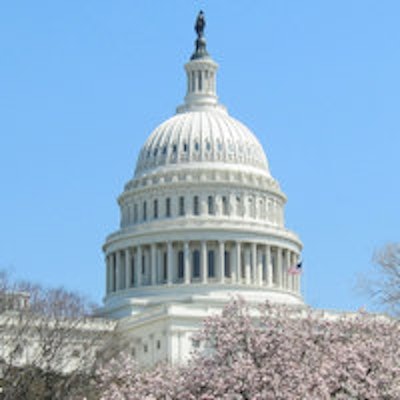
WASHINGTON, DC - For the past 10 years, the potential harms of medical radiation have often been overblown, scaring patients away from necessary scans. It's time to start talking about the benefits, according to the opening talk by Dr. U. Joseph Schoepf at the International Symposium on Multidetector-Row CT.
A 10-year barrage of news reports on the effects of medical radiation have run the gamut from cautious to hyperbolic, depending as much on the motivations of their authors as on the uncertain science that underlies the discussions, according to Schoepf, who is a professor of radiology at the Medical University of South Carolina.
It's time to play catch up, Schoepf said. Radiologists need to keep up the brisk pace of research into radiation's effects, educate patients in a balanced way, and by all means spread the word about the dramatic dose reductions that technology and awareness have combined to achieve in recent years.
The good news is that patients are listening.
"Patients don't know much -- 60% thought MRI was associated with radiation -- but the positive news is that acceptance of what their doctor tells them is extremely high," Schoepf said.
Pendulum swings
Upon coming to the U.S. in 2001, Schoepf recounted, he was told that medical radiation was a nonissue, and he was discouraged from researching the topic -- a far cry from the situation in Europe, where radiation has always mattered.
Now, of course, "the pendulum has swung, and probably it has swung way too far," he said. Radiation research, such as the 2006 Biological Effects of Ionizing Radiation (BEIR) VII report, is being "used and abused to pursue a multitude of different agendas."
Radiologists will recall the 2007 paper from David Brenner, PhD, in the New England Journal of Medicine about the dangers of CT in children as opening the floodgates to a media frenzy. Then Dr. Andrew Einstein, PhD, and colleagues, writing in the Journal of the American Medical Association later that year, warned that one in 114 people undergoing coronary CT angiography risked cancer from the scan. Brenner and Hall estimated that 1.5% to 2% of all cancers might be attributable to CT scans.
"The authors lambaste the radiation from CT imaging, comparing it to the radiation from radiographs, a comparison that I have always found inappropriate considering the very different levels of information that can be obtained from those two modalities," Schoepf said. "But that's basically what our referring colleagues ... read and see."
And just last week, Miglioretti et al writing in JAMA Pediatrics estimated that 4 million CT chest, head, abdomen, and pelvis scans performed each year on young patients in the U.S. might produce more than 4,000 cancer cases. In an accompanying editorial, Dr. Alan Schroeder and Dr. Rita Redberg pressed their case for doing everything possible to avoid unnecessary scans, even if it meant sometimes not knowing if cancer was present.
"Uncertainty can be unsettling, but it is a small price to pay for protecting ourselves and our children from thousands of preventable cancers," they wrote.
Schoepf dismisses such conclusions as "pretty hard to swallow" for someone in the medical imaging business. In a time when medical resources are poised for serious cutbacks, "it's hard to believe that publications and statements such as this do not bear an ulterior motive, raising the radiation specter in such a way as to use it against the imaging field to curb the growth of imaging," he said.
It bears repeating that the problem with much of the radiation research and other studies based on BEIR VII is that the report's results aren't based on patient experience. Rather, the results are based on a statistical enumeration of radiation doses from CT and an estimated number of cancers that could arise from the exposure based on plugging exposure readouts into the BEIR VII formula. On top of it all, Miglioretti and colleagues only actually measured the radiation from 744 CT scans, Schoepf said.
Radiation-effect studies aren't hard to produce, and they have quickly proliferated, being published in high-profile publications and receiving enormous attention in the professional community, he added.
Already lost?
Has radiology lost the battle? One might think so, looking at the recent passage of laws in California and Texas that mandate the careful tracking of radiation used in every scan. Not that there's anything wrong with or difficult about tracking doses. But laws such as these always come with the potential to enrich the legal community, Schoepf said.
But, happily for the imaging community, the battle is not yet lost. Radiation dose experts such as Cynthia McCollough, PhD, from the Mayo Clinic in Rochester, MN, and Dr. Willi Kalender from the University of Erlangen, Germany, to name two, have made great progress in "taking apart the very tenuous and fragile assumptions" underlying the BEIR VII report, assumptions that go to the heart of the debate about radiation exposure and cancer induction. However, clinicians who refer patients for imaging exams don't even know there is a debate, Schoepf said.
"Our colleagues do not know that we're having a real scientific discussion about what happens at the levels of radiation we use in medical imaging," he said. To twist the report's conclusions by stating that radiation is an actual harm rather than a risk has prompted entities such as the American Association of Physicists in Medicine (AAPM) to issue statements emphasizing the benefits of radiation-bearing exams.
"Discussion of risks related to medical imaging procedures should be accompanied by acknowledgement of the benefits relating to the procedures," AAPM wrote in December 2011. Risks at effective doses below 50 mSv for single procedures or 100 mSv for multiple scans "are too low to be detectable and may be nonexistent," the organization wrote, adding that estimates of cancer incidence are "highly speculative" and should be discouraged.
"We live in a world of risks, and it is likely that the risks of radiation do not deserve the completely overblown and outsized discussion that we're having now," Schoepf said. "In my opinion, if there is a proper indication [for the exam], the benefits will always outweigh the risks."
In a meeting presentation and in results published earlier this year in Radiology, Dr. Robert Zondervan and colleagues in Massachusetts used the BEIR VII algorithm to calculate the benefits versus the risks of scans over several years. They found there was no real contest: Imaging's benefits far outweighed the risks.
"Among young adults undergoing body CT, risk of death from underlying morbidity is more than an order of magnitude greater than [estimated] death from long-term radiation-induced cancer," they wrote.
Pushing back
There are several steps the radiology community can take to encourage a more balanced discussion of benefit versus risk, Schoepf said.
First, the imaging community needs to tell clinicians and its own trainees that a serious discussion is currently underway about the effects of radiation from imaging. Radiologists need to educate their colleagues on the enormous dose reductions that have been achieved in imaging -- achievements that are largely unknown among the general public.
"We need to foster that research, and we need to make sure that discussion on the benefits of imaging reaches the appropriate circles," he said. Hyperbolic magazine headlines that scream "the heart test that may kill you" don't benefit patients; discussions of radiation risk don't belong in supermarket checkout lines.
A researcher letter in April by Caverly and colleagues (JAMA Internal Medicine) indicates that patients don't know much about the risks and benefits of medical radiation, Schoepf said. Only 12% of 271 respondents thought the benefits outweighed the risks of radiation. On the plus side, a majority of patients said they would trust the final decision on whether or not to undergo medical imaging to their physicians.
A survey launched two years ago at the International Society for Computed Tomography (ISCT) meeting evaluated more than 1,000 households and, again, showed a general lack of knowledge about CT. In all, 60% thought MRI scans delivered radiation, compared with only 31% who thought that cardiac catheterization came with a radiation dose. Overwhelmingly, though, patients would leave the imaging decision to their physicians: 80% for CT scans and 88% for x-rays.
"Patients are not yet against us," Schoepf said. "Patients need education and they should get all the education they can get. And it also means we have a golden window of opportunity to provide the patient with facts about radiation reduction initiatives and the benefits of imaging."
Things are moving in that direction, but there is much more road to cover, he said. "
"We are radiology; radiation is in our name," Schoepf said. "Obviously, the discussion on radiation and how it is perceived by the public and our professional partners is very close to home as far as our livelihood is concerned... As the stewards of radiation and medical imaging, I believe the discussion on those matters should be ours to control."




















